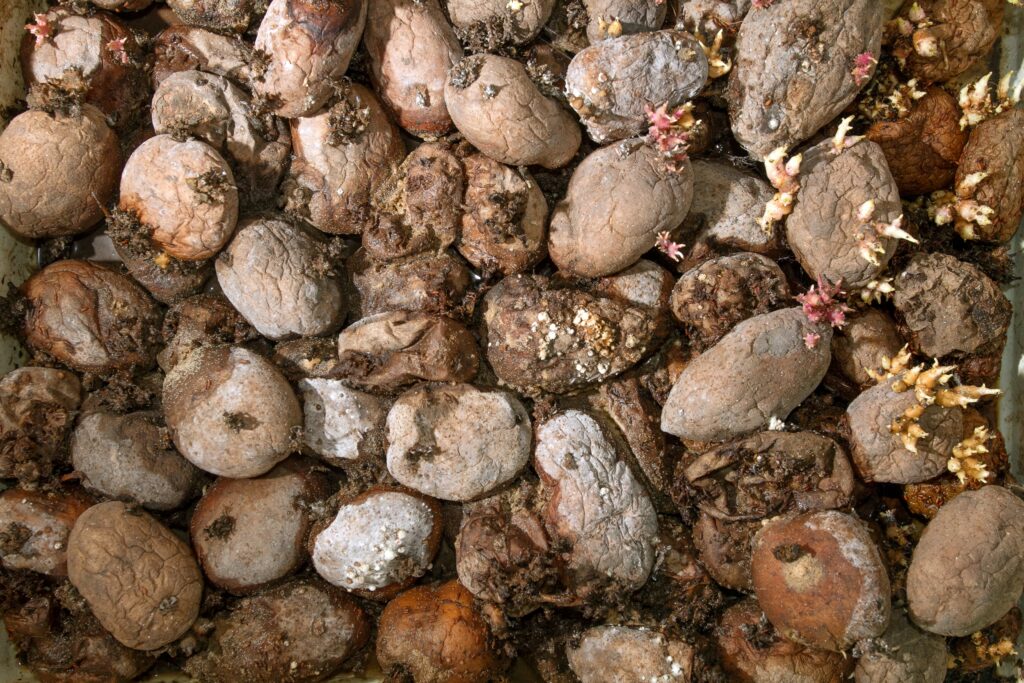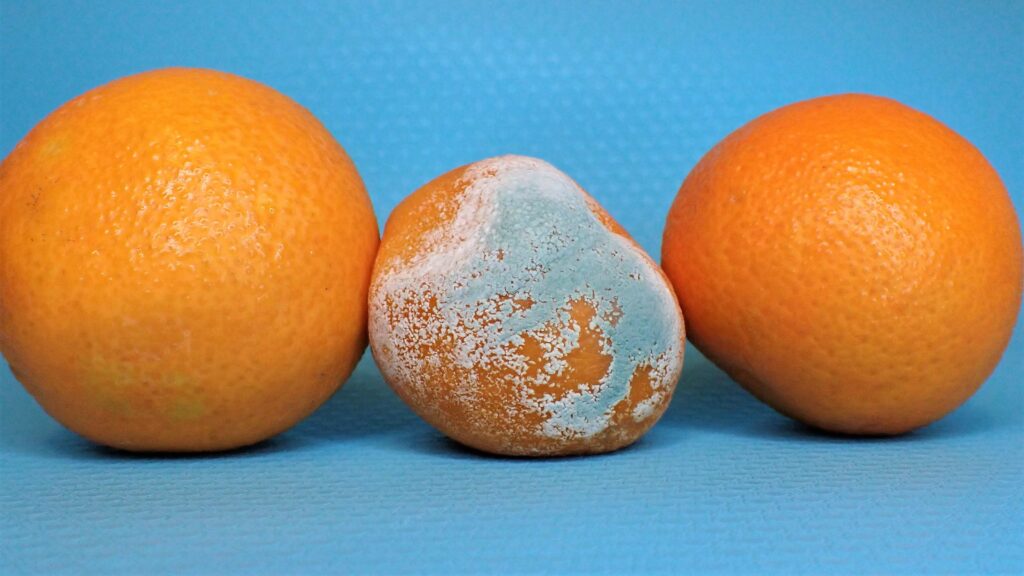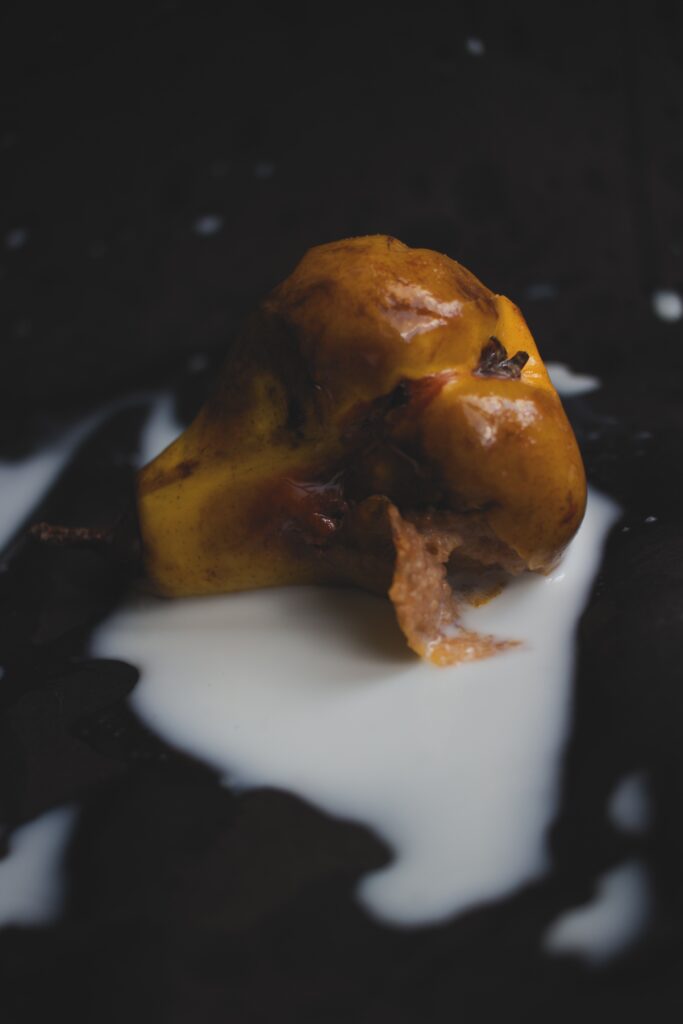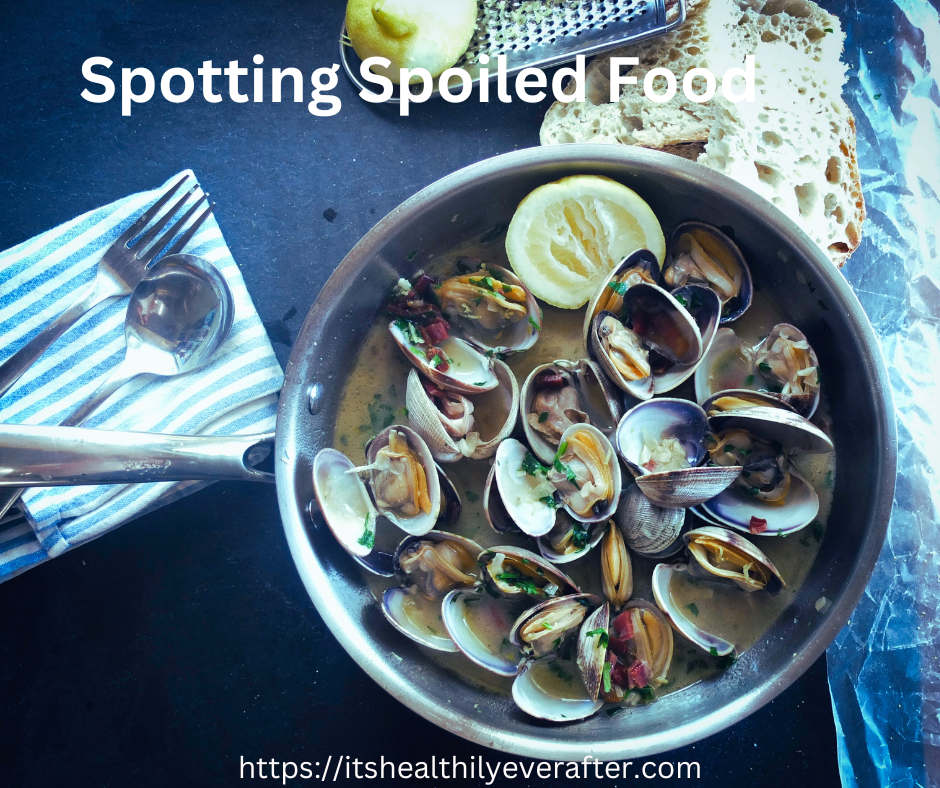Food that makes people sick will often be rotten, but how can you tell? Eating spoiled food can cause a variety of illnesses, so it’s important to be able to spot the signs that food has gone bad. In this blog post, we’ll explore some of the common warning signs that food that makes people sick will often exhibit, so you can make sure to avoid food poisoning and other illnesses.
Table of Contents
The nose knows
One of the easiest ways to tell if your food is spoiled is by simply smelling it. Our noses are incredibly sensitive, and can often detect subtle changes in the odor of our food that may indicate that it has gone bad. If you notice a strong, unpleasant smell coming from your food, it’s best to throw it out and avoid eating it.
Some of the most common odors associated with spoiled food include a sour or rancid smell, a moldy or musty odor, or a smell that is just generally “off.” Trust your senses – if your food doesn’t smell right, it’s likely not safe to eat. Keep in mind that some types of spoiled food, like raw chicken or fish, can also give off a foul odor even if they don’t necessarily look or feel spoiled, so always err on the side of caution when in doubt.
Our sense of smell is incredibly powerful, and it can often detect spoiled food before we even see it. If you notice a pungent, foul smell coming from your food, it’s a strong indicator that it’s no longer fresh and should be thrown away immediately.
For example, meat that’s gone bad will emit a sour, putrid odor that’s hard to miss. If you detect a similar smell in cooked or processed meat, it’s best to avoid consuming it. Likewise, dairy products that have gone off will often have a sour, rancid smell that’s unpleasant and unappetizing.
Other foods that commonly emit bad odors when spoiled include seafood, eggs, and certain types of fruits and vegetables. As a general rule of thumb, if food smells off, it’s usually best to err on the side of caution and discard it.
Remember, not all changes in smell indicate spoilage, especially when it comes to strongly-flavored or pungent foods. However, if the smell is noticeably different from what you’re used to, it’s always better to be safe than sorry.

Change in color
One of the most common indicators that food has gone bad is a color change. This can occur in several ways, depending on the type of food and the specific bacteria or mold that has begun to grow on it. For example, meat that has gone bad may start to turn a grayish or greenish color, indicating that bacteria have begun to grow and break down the proteins. Similarly, vegetables and fruits may become discolored as a result of mold growth, which can appear as black, white, or green spots or patches.
When you’re trying to determine whether or not a food is spoiled, it’s important to pay close attention to any changes in color and to take note of how drastic those changes are. For instance, a slight browning of an apple is not necessarily caused for concern, but if the entire fruit has turned brown or black and feels mushy or slimy to the touch, it’s best to avoid eating it altogether.
One exception to this rule is with fermented foods, which may actually change color as part of their normal process. For example, sauerkraut and kimchi may become darker or more brown as they ferment, but this does not necessarily mean that they are spoiled. However, it’s always a good idea to err on the side of caution and to only consume fermented foods that you trust to be safe.
In addition to watching out for color changes, it’s also important to pay attention to other signs of spoilage, such as texture and smell. By staying vigilant and keeping a close eye on the foods you consume, you can avoid getting sick from foodborne illnesses and enjoy a healthy, delicious diet. Food that makes people sick will often cause gastrointestinal illnesses, ranging from mild to life-threatening.

Change in texture
Another sign of food that makes people sick will often has a change in texture. For example, if fruits and vegetables become soft, mushy or slimy, they may have started to rot. Meat, fish, and poultry can also become slimy or sticky to the touch. These changes in texture are often caused by the growth of bacteria, yeast or mold, which can also cause illness when consumed. It’s important to inspect your food carefully before consuming it, especially if you notice any changes in texture. When in doubt, it’s better to be safe than sorry and discard the food. Don’t take a chance with your health.
If you’re dealing with dry or hard food, this can also be a sign of spoilage. This is especially true for baked goods like bread and crackers, which can become stale and lose their crispness over time. Spoilage can also affect nuts and seeds, causing them to become rancid and have an off taste. It’s important to pay attention to the texture of your food and to discard anything that has changed significantly.
One way to prevent spoilage and changes in texture is to properly store your food. The food that makes people sick will often not stored properly. This means keeping perishables like meats, dairy, and eggs in the fridge, and making sure your fridge is set to the correct temperature. Fruits and vegetables should also be stored properly to prevent rot and mold growth. When in doubt, follow the guidelines on the packaging or consult a trusted source for food storage tips.
Change in Taste
Aside from appearance and texture changes, spoiled food that makes people sick will often exhibit a noticeable change in taste. For example, milk that has gone bad will have a sour taste and a slightly thicker texture. Spoiled meat may taste rancid or have a putrid odor that can be hard to ignore. It’s essential to be mindful of the flavors in your food, as they can provide vital clues that it’s gone bad.
Fruits and vegetables may also show changes in taste when they start to spoil. For example, an apple that’s turned brown may have a stale or musty taste. Vegetables like lettuce can also taste bitter and have a slimy texture when they’ve gone bad. Additionally, certain spices and seasonings may lose their potency over time and can result in a bland or tasteless dish.
If you notice a change in taste in your food, don’t take it lightly. It’s better to be safe than sorry and discard the item to avoid any potential health hazards. Remember, consuming spoiled food can lead to foodborne illness, which can cause vomiting, diarrhea, and other severe health issues.
In summary, changes in taste are an important sign that food may have spoiled. If you detect an off taste, trust your instincts and dispose of the food promptly. It’s always better to err on the side of caution when it comes to food safety.
Molds and Mildews
Another sign of food that makes people sick will often be gone bad is the appearance of molds and mildew. These are types of fungi that thrive in damp and humid conditions, and can quickly spread and contaminate your food. Mold can appear in different colors such as black, green, or white, and can be fuzzy or slimy in texture.
Some common culprits for mold growth are bread, cheese, and fruits like berries and grapes. Mildew, on the other hand, is a type of mold that is commonly found in grains like rice and wheat. It can also appear on vegetables like cabbage and broccoli, especially if they are not stored properly. Food that makes people sick will often show signs of spoilage, such as discoloration or mold growth.
Consuming food with molds or mildews can cause a range of health problems, from minor digestive issues to serious allergic reactions. To prevent this, make sure to check your food regularly and discard any items that show signs of mold or mildew growth.
Always store your food in clean, dry containers, and keep them in a cool, dark place away from moisture. When in doubt, throw it out – it’s better to be safe than sorry. By being vigilant and aware of these signs of spoiled food, you can keep yourself and your family safe and healthy. Food that makes people sick will often pose a higher risk to certain populations, such as pregnant women, young children, and the elderly.
Food that makes people sick will often pose a higher risk to certain populations, such as pregnant women, young children, and the elderly.

The Risk Factors
Food that makes people sick will often be contaminated with perilous bacteria, viruses, or other disease-causing pathogens, which can result in various gastrointestinal conditions. These afflictions can manifest in the form of a gamut of symptoms such as nausea, vomiting, diarrhea, stomach cramps, and fever, which may range in severity from mild to life-threatening.
Some of the common types of foodborne diseases that plague humans are Salmonella, E. coli, Listeria, and Norovirus, which can be present in a wide variety of consumables, such as uncooked or undercooked meats, poultry, and seafood, as well as raw fruits and vegetables that have been contaminated during the processing or handling stages. Food that makes people sick will often result in symptoms such as nausea, vomiting, diarrhea, stomach cramps, and fever.
To mitigate the risks associated with such maladies, it is essential to implement appropriate food safety measures while preparing and consuming edibles. This includes regular hand washing and sanitization, meticulous cleaning of surfaces, cooking of food to the appropriate temperature, and avoiding cross-contamination between raw and cooked foods. Food that makes people sick will often require proper food safety techniques and awareness of food recalls and warnings to prevent illness.
Furthermore, it is prudent to remain abreast of any food recalls and warnings issued by regulatory bodies and food manufacturers when a product is discovered to be contaminated. By staying informed and adopting appropriate precautions, individuals can minimize the risk of foodborne illnesses and protect themselves and their families from such diseases while relishing a wholesome and secure diet.

Frequently Asked Questions (FAQs) about Recognizing Spoiled Foods:
1. What are the signs that Food that Makes People Sick Will Often be Rotten? Foods that can make people sick often show signs of spoilage, including visual changes like mold growth, discoloration, and unusual textures. Foul odors may also indicate the presence of harmful bacteria or toxins.
2. How do I determine if Food that Makes People Sick Will Often be Rotten? Food is likely rotten if you observe visible signs of decay, such as mold, slime, or unusual discoloration. Additionally, spoiled food may have a foul odor or an off taste that indicates it is no longer safe to eat.
3. Are there specific foods prone to spoilage linked to Food that Makes People Sick Will Often be Rotten? Perishable foods like dairy, meats, fruits, and vegetables are more susceptible to spoilage, often associated with Food that Makes People Sick Will Often be Rotten due to their moisture content and nutrient composition. However, any food can spoil without proper storage and handling.
4. Can Food that Makes People Sick Will Often be Rotten cause illness? Yes, consuming food that is rotten or spoiled can lead to foodborne illnesses caused by harmful bacteria, fungi, or toxins present in the food. Discarding any items displaying signs of spoilage is crucial to prevent illnesses associated with Food that Makes People Sick Will Often be Rotten.
5. How can I avoid Food that Makes People Sick Will Often be Rotten? Preventing food spoilage linked to Food that Makes People Sick Will Often be Rotten involves proper storage and handling practices. Keep perishable items refrigerated or frozen, maintain kitchen cleanliness, follow expiration dates, and prevent cross-contamination between raw and cooked foods.
Bottom Line – Food that makes people sick will often be rotten
When it comes to food, there is nothing more important than ensuring that it is fresh and safe to eat. It is a well-known fact that consuming spoiled or rotten food can make you very sick. However, many people are not aware of the signs that food has gone bad. The key is to keep an eye out for any changes in color, texture, or smell. Food that makes people sick will often be improperly handled or stored, leading to contamination.
If you notice any of these signs, it is best to avoid eating the food altogether. While it may be tempting to salvage the food, it is not worth the risk of getting sick. In addition, mold and mildews can be dangerous, and they are often present in spoiled food.
It is essential to remember that certain foods are more prone to spoilage than others. This includes dairy products, meats, and fresh produce. These items should be kept at the appropriate temperature and stored correctly to prevent spoilage.
If you are unsure whether a particular food has gone bad, it is best to err on the side of caution and throw it away. While it may be disappointing to waste food, it is much better than risking your health.




